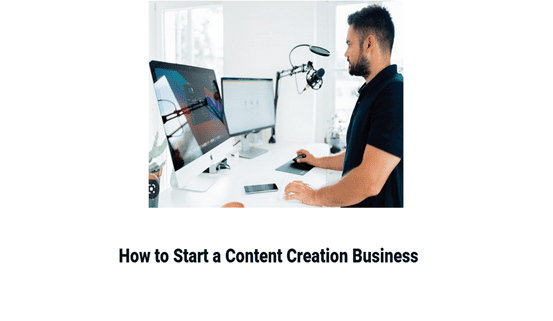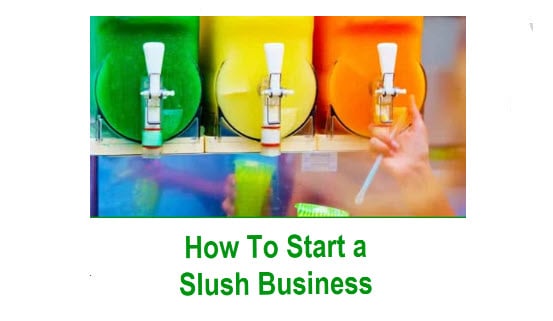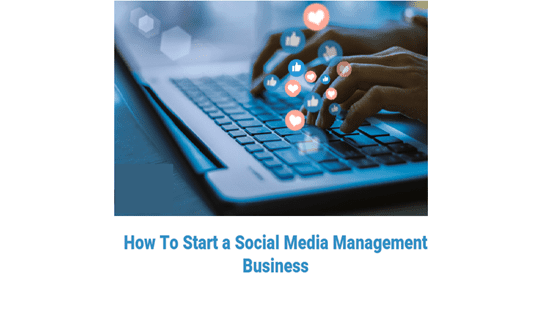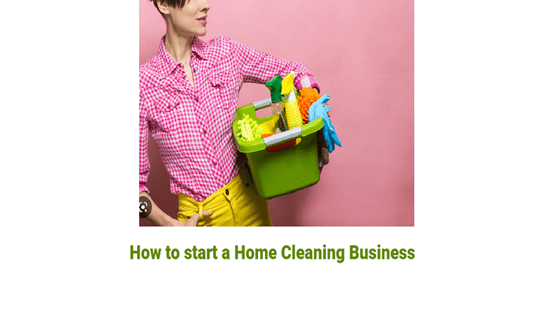How to Start a Champagne Brand – 19+ Easy Steps
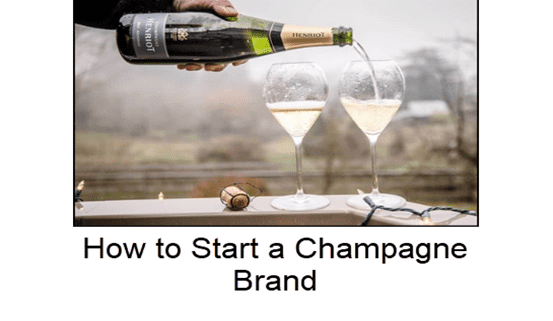
Hey there,
If you were wondering,
How to Start a Champagne Brand
You are in the right place.
Starting a champagne brand can be daunting, but it can be rewarding with the right strategies and knowledge.
We’ve broken it down into easy-to-follow steps to make the process as smooth as possible.
Keep reading to learn how to start a champagne brand and turn your passion into a successful business.
Watch: How to create your private champagne brand.
https://www.youtube.com/watch?v=wWytCZpEfDw
What is a champagne brand?
What is a champagne brand? A champagne brand is a unique way to bring sparkling wine to the masses and requires careful consideration before you start. It is traditionally made from a blend of different grape varieties and has carbonation.
The production process for Champagne involves secondary fermentation and maturation in bottles, resulting in its signature bubbly flavor.
Champagne brands can range from basic to complex, depending on their mix of grapes and flavors.
It’s essential to clearly understand the legal requirements and regulations around making and selling alcoholic beverages and the ability to source high-quality grapes and create an exquisite blend of Champagne for your customers.
How much does launching a champagne brand cost?
Starting a Champagne business is often compared to investing. With the estimated average cost of $500,000 for launch and operation expenses such as marketing, location selection, and production supplies – this is no small expense.
The outcome must be carefully weighed against how it will affect your bottom line concerning pricing to see profits from created sparkler favorites like Non-Vintage varieties, which are generally more budget-friendly at around $44 per bottle on retail shelves.
Watch: How Much Capital Do I Need To Start a Liquor Brand
What Is The Start Up Cost Of A Vineyard?
With ingenuity, you can bypass the often hefty costs of owning vineyard land by starting your winery in the comfort of your backyard.
If space allows and regulations permit, viticulture enthusiasts may find affordable opportunities to craft their boutique wines without paying anywhere from $35K-$45K per acre for an established vineyard.
Is Champagne Expensive To Make?
Enjoying a glass of bubbly Champagne can be a special treat – but the high cost to produce it makes for an equally expensive sipping experience.
Grapes used to make this premium beverage must be grown in certain areas within France and then hand-harvested using specific types of grapes, adding additional costs during production.
As if that’s not enough evidence as to why prices are so steep, Champagne regions also endure some harsh climates – cold temperatures and low rainfall give rise to even higher retail pricing than other famous wines such as Prosecco ($12 per bottle) when compared with bottles costing up $40 or more.
19 Essential Steps for Starting Your Own Champagne Brand
We’ve developed a comprehensive guide with 19 essential steps to help you realize your vision.
Find all the steps below:
1. Understanding the Necessary Steps for Starting Your Brand:
To begin creating your champagne brand, taking stock and considering all the steps required, from sketching a business plan and securing financing to sourcing ingredients and creating labels and packaging materials, is essential.
In addition, you’ll need to be familiar with distribution processes, marketing plans, pricing strategies, e-commerce channels, and more to launch your champagne brand successfully.
2. Identifying Your Target Audience and Knowing What They Want:
One of the critical components when starting your champagne brand is understanding who your target audience is – those who are likely to purchase your product – by analyzing market trends and demographics data.
You’ll also need a sound understanding of what they want in terms of flavor profiles and price points so you can craft a unique recipe or blend that sticks out from competitors while remaining accessible to consumers.
3. Where to Source High-Quality Grapes:
You’ll need high-quality ingredients if you want to create an exquisite blend of sparkling wines for drinkers; fortunately, there are many sources throughout Europe, such as France, Italy, or Spain, where you can purchase premium grapes at reasonable prices depending on what type or style you’re looking for.
4. Crafting Your Unique Recipe or Blend of Champagnes:
Once you’ve sourced top-quality grapes from European suppliers, it’s time to develop your unique recipe or blend that stands out from other available brands today by carefully choosing aromas and flavors that appeal most likely consumers in your target audience demographic range.
5. Setting Up Production Facilities and Sourcing Bottles, Corks, Etc.:
Before you can bottle up your expertly crafted recipe or blended champagnes into bottles bound off retail shelves worldwide, novices need the proper equipment to produce an impeccable bubbly beverage on a large scale basis.
Production facilities must be physically constructed, including sourcing cork used to seal bottles corks come in a variety of sizes and shapes.
Manufacturers specialize in different styles, often offering customized options to fit any label design, press run manufacture customized bottles made desired color shape specifications requested to meet individual needs, budgets required label run, etc.
6. Registering and Securing Trademarks and Copyrights:
After you’ve created your masterpiece of gasoline, it’s essential to secure the legal rights of your brand by registering for trademarks and copyrights with the appropriate governing bodies so competitors don’t infringe upon any of your intellectual property.
This is often a time-consuming process, but it will help ensure that your products are protected from people who may try to replicate them.
7. Creating Labels, Packaging, and Promotional Materials:
Compelling labels, packaging materials, and promotional materials are essential when launching a new champagne product – they can make or break a consumer’s decision-making process in choosing your product over another competing one on the shelf.
You’ll want to create designs and materials that evoke emotion, tell stories, or indicate quality that speaks to your target customers; the label design should be aesthetically pleasing and informative, including details such as ABV%, vintage, food pairing suggestions, and more if applicable.
8. Developing a Business Plan for Financing Purposes:
Once you have all the components ready for production and distribution, it’s time to develop an effective business plan to get financing for all costs associated with setting up shop – this can include purchasing grapes and other ingredients, bottling equipment/supplies, packaging materials, etc.
A well-thought-out strategy outlining projected revenues and expenses should be put together to convince potential financiers of the possible success of your champagne brand.
9. Exploring Distribution Options:
Wholesale, Retailers, etc.: One of the most critical factors in any successful champagne brand is getting their product onto store shelves around the world – whether through wholesalers or retailers – so consumers can purchase it easily without having to search far beyond their local area code.
It would be best if you explored what options are available while keeping an eye out on trends in online shopping to effectively expand access points for buyers looking to purchase bottles of bubbly from you directly online via an e-commerce platform or marketplaces like Amazon,eBay, etc.
10. Pricing Strategies That Will Make Your Brand Stand Out:
Getting the pricing right for your champagne brand should consider the cost of ingredients and bottling/packaging materials.
As well as factors like location, consumer preferences, and competitor prices, among other things, to ensure customers perceive your product as being worthy of their money without feeling ripped off.
Most champagne brands offer both traditional retail pricing and online discounts; creative payment solutions such as subscription models have also become popular in recent years, which could be explored if appropriate.
11. Developing a Marketing Plan:
A marketing plan should outline strategies you’ll use to effectively promote your brand, including identifying influencers within your target market, formulating social media campaigns targeting specific demographics, setting up ad buys on platforms like YouTube or Google Ads, etc., and designing graphics for email campaigns.
It’s essential to focus on one or two tactics and then expand once those initiatives have successfully built awareness around your champagne brand amongst its target audience base.
12. Designing an eCommerce Webstore or Marketplace Account:
If selling directly to consumers is your priority, then developing an eCommerce website (or setting up an account on marketplaces like Amazon) is the way to go.
You’ll need to carefully think about design elements – such as layout, fonts, colors, and imagery – that are engaging yet easily navigable so shoppers can find what they’re looking for quickly and efficiently; this will require creating a seamless checkout process complete with tools that assess taxes, currency conversions, and shipping estimations.
13. Monitoring Product Quality Standards:
Another critical step when starting a new champagne brand is monitoring product quality standards – this includes anything from checking color consistency across batches or examining clarity levels of liquids held in bottles – to make sure all products leaving production facilities meet stringent requirements set forth by governing bodies such as the Bureau of Alcohol, Tobacco & Firearms (ATF) or European Union Commission (ECC) certification rules etcetera.
14. Establishing Supportive Partnerships:
When running a business, it’s wise to build relationships with supportive partners who can help facilitate sales via referrals or be potential customers themselves.
These include associations offering relevant industry information and suppliers who can provide bulk ingredients at competitive prices, so you don’t overspend on raw goods while still maintaining high-efficiency output standards.
15. Keeping Up With Industry Trends and Regulations:
The wine industry is constantly evolving due to changes in tastes among consumers, advancements in technologies used during production processes, etc.
It’s vital that you actively keep up-to-date with these developments to remain competitive and aware of any legal regulations regarding labeling/packaging laws that may come into force from time to time which could affect how you structure distribution plans, etc.
16. Joining Professional Organizations and Events:
Joining professional organizations related to your product or industry is an excellent way to gain exclusive access to new insights and stay up-to-date with the latest industry news.
Network with professionals that can offer valuable guidance in navigating certain areas of business operations and potentially partner on projects that could help propel your brand’s visibility further.
Additionally, attending conferences and expositions in your field allows you to learn directly from experts and acquire invaluable knowledge which might come in handy during key decision-making processes.
Hence, it’s essential to dedicate some time to research each year, if possible.
17. Creating Content to Promote Your Brand:
To get customers interested in your champagne brand, you’ll need to create engaging content that speaks directly to them and taps into your product offerings’ unique personality.
This could be anything from videos demonstrating how to store and serve Champagne properly or educational blog posts informing consumers of the differences between different types of bubbly – whatever you choose, make sure it’s creative while also positioning your Champagne appropriately.
Hence, people know exactly what they should expect when they purchase.
18. Leveraging Social Media Marketing:
When it comes to driving awareness of your champagne brand, leveraging the power of social media is vital.
Make sure you have a presence across all the major platforms like Instagram, Twitter, Facebook, and Pinterest – explore different types of content to have a glance at what resonates best with your target audience and create a consistent flow of exciting posts, stories, and updates to keep people interested.
Use hashtags and influencer collaborations to widen your reach and generate more brand exposure.
19. Holding Events:
If you want to get more people interested in your champagne brand, consider hosting events such as tastings or classes to allow people to try out the bubbly and learn more about it.
You can partner with local stores or bars to host the events and make sure you have promotional materials like pamphlets and special offers available so people can take something away with them as a reminder.
Additionally, don’t forget to use social media to spread the word about your events – this will help you reach even more potential customers.
FAQS
Can You Make Your Own Champagne?
Technically, unless you produce it in the Champagne region of France, it is impossible to make homemade Champagne on your property. This is because the term “champagne” is a legally protected designation for sparkling wine produced with grapes from the Champagne region of France.
What Are Requirements for Producing Champagne?
For indulging in champagne Production, two requirements need to be satisfied. In the first place, the wine must be produced in a region of northern France that is legally specified. Second, the bottle from which the sparkling wine is ultimately sold and consumed must undergo the fermentation stage, which gives the wine its bubbles.
Is Champagne a Good Investment?
Champagne is a highly sought-after wine investment due to its exceptional quality, consistent price growth, and value. In particular, rarer older vintages of the most esteemed Champagnes can offer outstanding returns for investors.
Is Champagne Trademarked?
Yes, the term “Champagne” is trademarked as a protected geographical indication (PGI) for sparkling wine produced in the Champagne region of France.
Only sparkling wine produced in this region can legally be called “Champagne.”
Other sparkling wines produced in the different areas must be labeled as “sparkling wine,” “sparkling wine from (region),” or “methode champenoise” (if produced using the traditional method used in Champagne).
The name Champagne carries a special meaning, as it’s been legally protected in the EU and many other countries since 1891.
The exclusive sparkling wine of the eponymous region must adhere to specific standards for this designation, making it an appellation d’origine contrôlée – ensuring authenticity with every bottle enjoyed.
What Is the Markup on Champagne?
A bottle of wine should typically be marked up 200–300% over its retail sales price. A high-end wine will, therefore, probably sell for $60 to $80 at a restaurant if it retails for $20 at a wine store.
Who Buys the Most Champagne?
In the international market for Champagne, the United States and the UK are setting global standards. This can be seen through their leading imports in 2021 of 34.1 million 750-milliliter bottles from America and 29.9 million from Britain, respectively.
Does Champagne Go Bad?
Yes, Champagne can go bad. The lifespan of an unopened bottle depends on how you store it and whether it’s a vintage or non-vintage Champagne. And, if you don’t store your opened bottle of bubbly appropriately, it can quickly get oxidized, lose its fizz, and turn sour.
Conclusion: How to Start a Champagne Brand
And there you have it,
Our Comprehensive Guide on How to Start a Champagne Brand.
We hope these steps have been helpful and have given you the confidence and knowledge to turn your champagne dreams into a reality.
Kickstarting a business is difficult, but your passion can become a successful brand with consistency, dedication, and bubbly cheer.
Cheers to your future success.
Remember to check out SickofthaBoss.com for even more amazing tips and tricks.
We’ve got tons of ideas for businesses you can start with minimal capital so your entrepreneurial dreams into a reality.
Take advantage of all the valuable resources we have to offer.
SickofTheBoss.com is the brainchild of Jack Bastide. It is designed for entrepreneurs and those that want to be. You can find Jack on Facebook or Linked-In.

